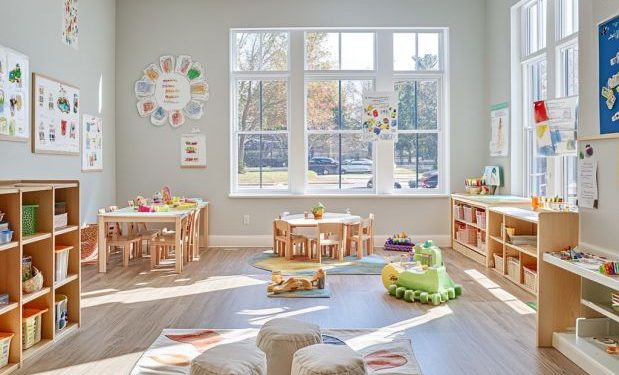Auckland kindergarten are dedicated to providing a rich and stimulating environment that fosters the holistic development of young children. At the heart of their approach is Te Whāriki, New Zealand’s unique bicultural early childhood curriculum. This framework guides educators in creating experiences that nurture every child’s potential, ensuring a strong foundation for lifelong learning and well-being.
Te Whāriki: A Woven Mat of Learning
Te Whāriki, meaning “the woven mat,” symbolises the interwoven nature of learning and development. It is a bicultural curriculum, acknowledging Māori as tangata whenua (people of the land) and reflecting the diverse cultural heritages of all children. Unlike traditional, subject-based curricula, Te Whāriki is organised around five broad strands, each contributing to a child’s overall growth:
- Well-being (Mana Atua): Fostering children’s health and emotional security.
- Belonging (Mana Whenua): Helping children feel comfortable and connected to their environment and community.
- Contribution (Mana Tangata): Encouraging children to participate and learn with others.
- Communication (Mana Reo): Developing verbal and non-verbal communication skills.
- Exploration (Mana Aotūroa): Supporting children to make sense of their world through active investigation.
These strands are not isolated but are interconnected, much like the threads of a woven mat, ensuring a comprehensive approach to early development.
Holistic Development Through Play
Auckland kindergartens firmly believe in play-based learning as the most effective method for young children. Play is seen not just as recreation, but as a powerful vehicle for learning across all developmental domains:
- Social and Emotional Growth: Through collaborative play, children learn to share, negotiate, resolve conflicts, empathise with others, and develop self-regulation. Role-playing helps them understand different perspectives and express emotions in a safe context.
- Cognitive Development: Activities like building with blocks, solving puzzles, and engaging in imaginative scenarios enhance problem-solving skills, critical thinking, creativity, and memory. Children learn cause and effect and develop logical reasoning.
- Physical Development: Both fine and gross motor skills are honed through a variety of activities. Outdoor play involving running, climbing, and balancing strengthens large muscles, while drawing, cutting, and manipulating small objects refine hand-eye coordination and dexterity.
- Spiritual Development (Mana Aotūroa): This strand encourages children to explore their world with curiosity and wonder, fostering a sense of awe and respect for nature and the environment.
Nurturing Early Literacy and Numeracy
While formal lessons are not part of the kindergarten day, Auckland kindergartens intentionally embed literacy and numeracy learning within play and daily routines.
- Literacy: Children are immersed in a language-rich environment. Storytelling, reading books, singing songs, and engaging in conversations expand vocabulary and comprehension. Mark-making, drawing, and experimenting with writing tools naturally lead to an understanding of print concepts. Teachers might label items, write down children’s stories, or encourage children to “read” familiar signs.
- Numeracy: Mathematical concepts are explored through practical, hands-on experiences. Children learn about counting, sorting, patterning, measuring (e.g., in the sandpit or during cooking), and recognising shapes through everyday play with blocks, puzzles, and natural materials.
Biculturalism and Cultural Responsiveness
Auckland’s diverse cultural landscape is celebrated within its kindergartens. Te Whāriki’s bicultural foundation means that Te Reo Māori (the Māori language) and tikanga Māori are integral parts of the curriculum. Children learn waiata (songs), karakia (prayers/incantations), and basic Te Reo phrases. Furthermore, kindergartens strive to be culturally responsive, acknowledging and valuing the languages, customs, and backgrounds of all children and their whānau (families). This fosters a strong sense of identity and belonging for every child.
The Role of the Kaiako (Teacher) and Whānau Partnership
The kaiako (teacher) plays a crucial role in implementing Te Whāriki. They are skilled observers who notice children’s interests and strengths, then use this information to plan engaging learning experiences. They extend children’s thinking through thoughtful questions and provide resources that deepen exploration.
A key aspect of Te Whāriki is the emphasis on whānau partnership. Kindergartens actively encourage parents and families to be involved in their child’s learning journey, recognising that children learn best when there is strong continuity between home and the early learning environment.
In essence, the curriculum in Auckland kindergartens is designed to create confident, competent, and curious learners, ready to embrace the challenges and opportunities of primary school and beyond.








